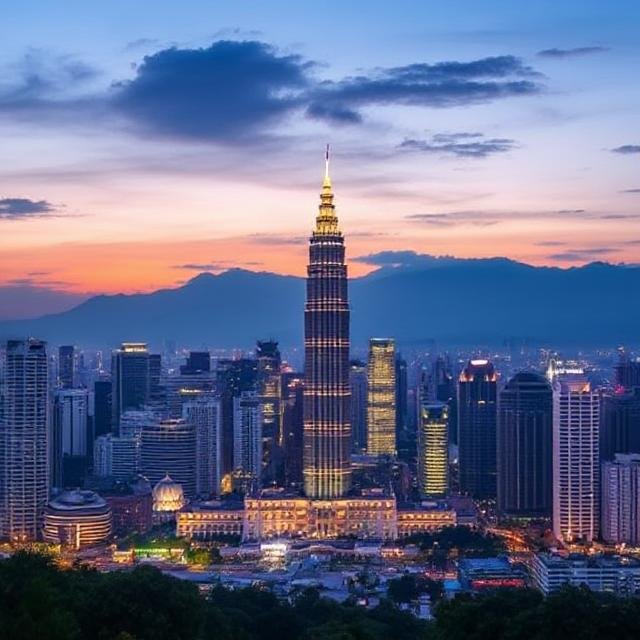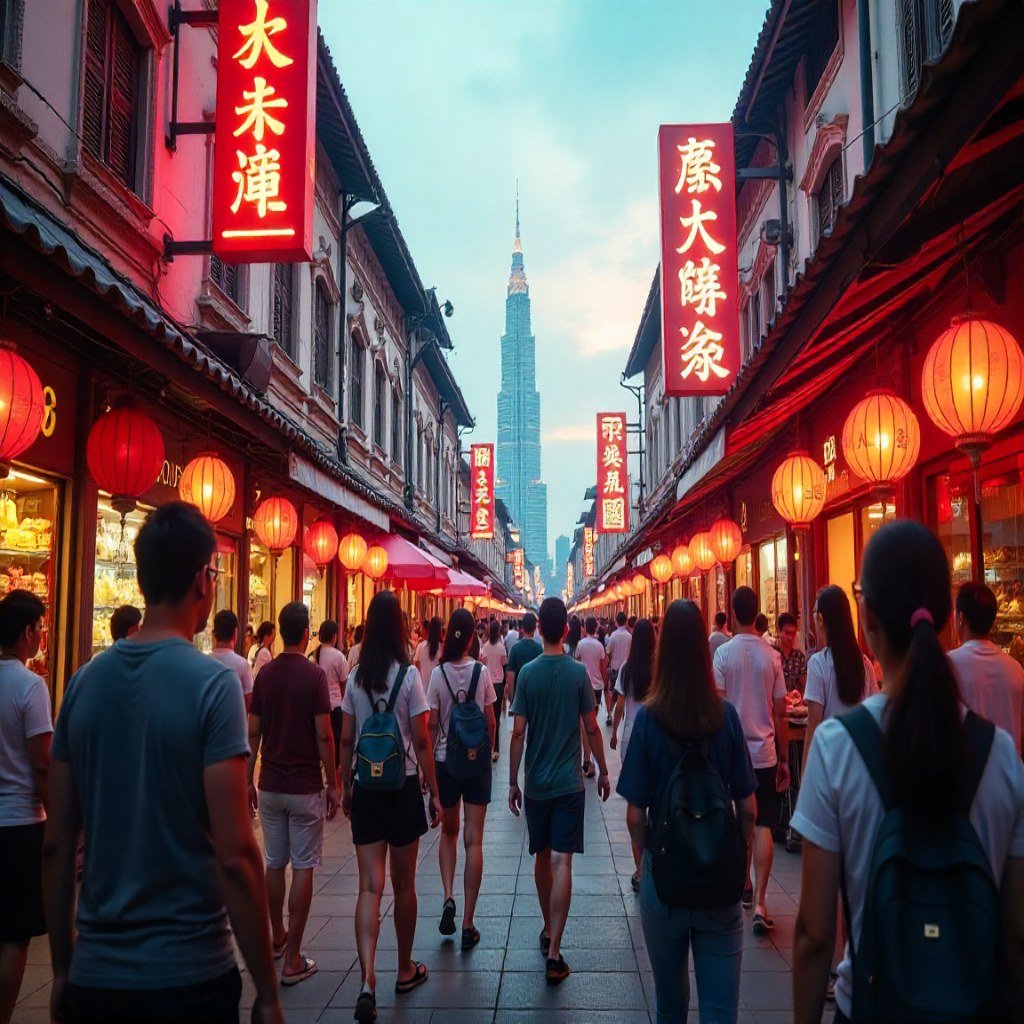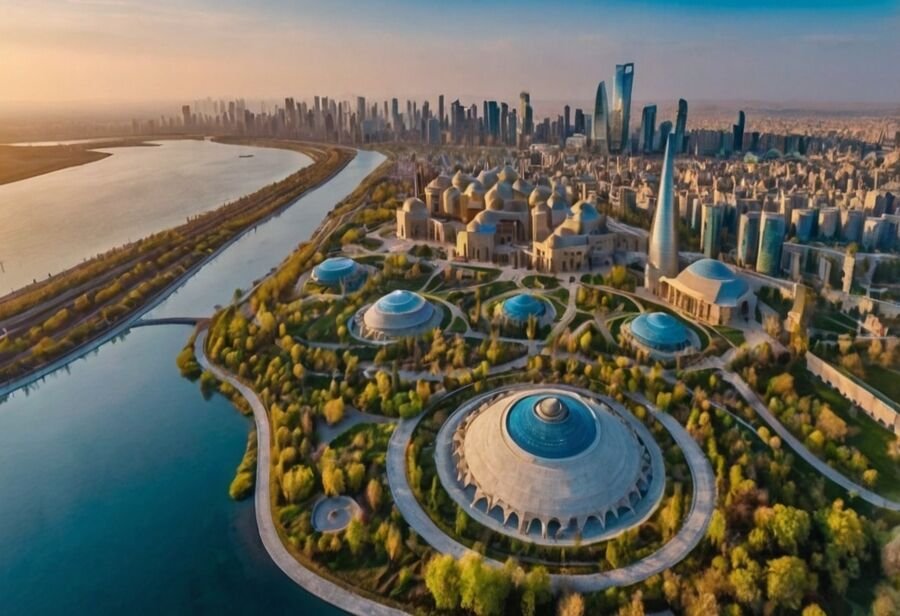Asia Travel Pulse
Malaysia Outpaces Thailand in Tourist Arrivals, Driven by Visa Policies and Improved Tourism Infrastructure

Saturday, August 2, 2025
Malaysia has been a star performer for Southeast Asia’s tourism industry in 2025, overtaking Thailand to become the region’s most visited destination during the first half of this year. Malaysia hosted 16.9 million international tourists between January and May in 2025, outpacing Thailand’s arrival of 16.61 million visitors. This tectonic change signifies a new phase in the regional tourism dynamics where Thailand has been pre-eminent as the primary hub of travel activity in Southeast Asia. The burgeoning number of tourists in Malaysia has been attributed to its robust visa policy, development on the infrastructure and aggressive promotion campaign.
Malaysia’s Surge in Tourism
Malaysia’s tourism industry has shown impressive resilience and growth, with a notable increase in foreign arrivals compared to previous years. The country’s tourism performance from January to May 2025 showcases a 16.9 million figure, positioning Malaysia as a key player in the region’s travel sector. This is particularly noteworthy as Thailand, once the undisputed leader, has seen challenges affecting its tourist numbers.
Several factors have contributed to Malaysia’s success in attracting international visitors. The country’s visa policies, particularly the extension of visa exemptions for Chinese travelers, have played a crucial role. Malaysia recently extended its visa-free entry for Chinese nationals for an additional five years, with an option to extend it further until 2036. This move is expected to continue driving tourism from China, which is one of the largest source markets for Southeast Asia. Additionally, the country has also extended its visa-free entry for Indian tourists until 2026, further expanding its reach to key Asian markets.
Infrastructure Improvements and Targeted Marketing
Malaysia’s robust infrastructure has also been a key factor in supporting the surge in tourism. Kuala Lumpur International Airport (KLIA) has recently undergone a major upgrade at Terminal 1, with a budget of RM30 million (approximately US$7 million). This enhancement is designed to accommodate the increasing volume of tourists and provide a smoother travel experience for international arrivals. The upgraded facilities will ensure that Malaysia remains competitive in the global tourism market, especially as tourist numbers continue to grow.
In addition to infrastructure improvements, Malaysia’s tourism success has been bolstered by well-targeted marketing campaigns. The government, alongside private sector stakeholders, has effectively showcased Malaysia’s diverse attractions, from its bustling cities and pristine beaches to its cultural heritage and eco-tourism offerings. These marketing efforts have helped attract a broad range of international tourists, positioning Malaysia as an ideal destination for travelers seeking a blend of modernity and tradition.
Thailand Faces Tourism Setbacks
While Malaysia has experienced a boost in tourism, Thailand has faced a series of challenges that have impacted its ability to maintain its previous dominance in the region. Several negative events, including safety concerns and natural disasters, have played a significant role in the decline in foreign arrivals.
One of the most prominent incidents occurred in January 2025, when Chinese actor Xing Xing was kidnapped in Thailand by a scam syndicate connected to Myanmar. This high-profile event raised serious safety concerns among Chinese travelers, contributing to a sharp drop in arrivals from the Chinese market. The kidnapping, along with other security-related issues, has had a lasting impact on Thailand’s tourism industry, particularly in attracting Chinese tourists.
In addition to the kidnapping incident, Thailand was struck by a deadly earthquake on March 28, 2025. While the earthquake did not cause widespread devastation, it heightened concerns about the country’s safety, further deterring international visitors. The earthquake, coupled with political instability and escalating military clashes along the Thai-Cambodian border, has led to a surge in accommodation cancellations, especially in provinces near the conflict zones.
Malaysia’s Focus on Safety and Security
To address safety concerns and ensure a secure environment for tourists, Malaysia has implemented several measures to enhance its security protocols. The government has taken proactive steps to tighten security at airports and across the country. This includes denying entry to hundreds of foreigners on flights deemed “high-risk” and enforcing strict checks to ensure that travelers are safe and free from any potential threats. These efforts are part of Malaysia’s broader strategy to reassure tourists and maintain a positive image as a safe and welcoming destination.
Comparative Outlook: Malaysia vs. Thailand
While Malaysia is experiencing impressive growth in tourism, Thailand’s tourism industry continues to grapple with multiple setbacks. In addition to the challenges faced earlier in the year, the recent military clashes along the Thai-Cambodian border have further exacerbated the situation, with neighboring provinces witnessing significant drops in tourist numbers.
Thailand’s ability to recover will depend on how effectively it addresses these issues and restores confidence in its tourism sector. The government will need to focus on improving safety, enhancing infrastructure, and launching strategic marketing campaigns to regain the trust of international visitors, particularly from key markets such as China and Europe.
In contrast, Malaysia’s forward-thinking policies, coupled with infrastructure investments and strong marketing campaigns, have positioned the country as a rising star in Southeast Asia’s tourism sector. The extension of visa exemptions, upgrades to key travel infrastructure, and a focus on security have made Malaysia an increasingly attractive option for international tourists.
Future of Tourism in Malaysia
As tourism trends in Southeast Asia develops, Malaysia’s considerable boost of foreign tourist arrivals is indicative that the region has more to offer than one would expect. Strong backing from the government, marketing and better infrastructure has made Malaysia a strong contender to challenge Thailand in tourism. Meanwhile, safety issues and regional conflicts coupled with global political tensions have significantly dented Thailand’s tourism confidence and arrivals.
The next few months will be crucial for both the countries to get back on their feet and adapt to evolving global tourism trends. The steadfast emphasis on security and infrastructural elements combined with localized marketing efforts should guarantee Malaysia’s continued prosperity; however, Thailand will need to address its issues head-on if it is to remain a favoured international destination.
Asia Travel Pulse
Laos-China Railway: A Revolutionary High-Speed Rail Link Transforming Travel and Tourism in Southeast Asia

Sunday, August 3, 2025
The Laos-China Railway (LCR), a significant project worth £4.6 billion, has ended years of travel difficulties between Laos and China. This rail link, which opened in 2021, has greatly improved connectivity between the two countries and changed the transportation scene in Laos, a nation previously known for its difficult and slow overland travel.
Spanning 414 kilometers from the Boten border near China to the capital city of Vientiane, the LCR is more than just a transportation project; it is a driver of economic growth, regional cooperation, and tourism development. This high-speed rail line has changed how both locals and tourists travel through Laos, making the once challenging journey into a smooth, comfortable, and fast experience.
A Transformative Project for Laos
Before the construction of the Laos-China Railway, Laos had been plagued by inadequate infrastructure, with limited road networks and a lack of modern transport options. Travel within the country, especially to remote regions, was often arduous, characterized by long journeys on poorly maintained roads in overcrowded, uncomfortable minibuses.
For years, the people of Laos had endured this transportation struggle, which hindered not only the movement of goods but also regional tourism and economic development. However, with the introduction of the LCR, the country has entered a new era of travel that promises to reshape its future.
The LCR, which was built as part of China’s Belt and Road Initiative, has created a fast and efficient rail link connecting Kunming, China, to Vientiane, Laos, cutting travel times significantly. What used to take days by road is now accomplished in just 10 hours by train. This reduction in travel time is not just a matter of convenience; it is a transformative shift that is expected to bring long-term benefits to both countries.
High-Speed Rail Brings Comfort and Efficiency
The Laos-China Railway is the first high-speed rail network in Laos, representing a leap forward in the country’s infrastructure. Unlike the grueling overland travel of the past, the LCR offers a modern, air-conditioned, and efficient mode of transport. Passengers can now enjoy a smooth, fast ride through some of Laos’ most scenic regions, including lush forests, mountains, and rural landscapes. This rail link has dramatically improved the travel experience, making it much more pleasant for both locals and visitors alike.
For tourists, the new rail link offers a much more convenient way to explore Laos, providing easy access to popular destinations such as Luang Prabang, Vang Vieng, and Vientiane. These cultural hubs and adventure hotspots are now within a short distance of each other, making it possible to experience more of Laos’ rich history and stunning natural beauty in a fraction of the time.
Economic and Tourism Impact
The Laos-China Railway has not only improved transportation but has also had a profound impact on the country’s tourism and economy. The rail link facilitates travel between China and Laos, increasing the flow of tourists and trade between the two nations. This new accessibility is expected to attract more Chinese tourists to Laos, a market that was previously underserved due to travel difficulties.
The railway also supports local tourism by connecting cultural destinations, adventure locations, and urban centers. Luang Prabang, for example, is a UNESCO World Heritage Site known for its stunning temples, monasteries, and traditional architecture, while Vang Vieng is a favorite among adventure seekers, with activities like tubing, hiking, and rock climbing. These sites are now easier to access, making it more likely that tourists will visit multiple destinations within Laos during a single trip.
Additionally, the LCR plays a key role in boosting economic development. By improving regional connectivity, the railway is helping to integrate Laos more fully into the regional economy. The enhanced infrastructure has opened up new opportunities for investment, business, and trade, particularly as Laos becomes a more important player in China’s Belt and Road Initiative.
Key Stops Along the Laos-China Railway
The Laos-China Railway serves several key stops along its 414-kilometer route, each offering unique experiences for travelers. Some of the most notable stops include
- Boten—Located near the Chinese border, Boten is a crucial entry point for both trade and tourism. The railway’s connection to Boten has made it much easier for travelers to access northern Laos and connect with other regional destinations.
- Muang Xai – A small town in the northern part of Laos, Muang Xai is an essential stop for travelers heading to the country’s rural regions. It offers an authentic look at Lao village life.
- Luang Prabang—One of the most famous cultural destinations in Southeast Asia, Luang Prabang is now more accessible than ever thanks to the LCR. Its UNESCO World Heritage status makes it a must-visit for anyone exploring the region.
- Vang Vieng—Known for its stunning natural beauty and adventure tourism, Vang Vieng is a top destination for those seeking outdoor thrills. The LCR makes it easier for visitors to reach this popular location.
- Vientiane—The capital city of Laos, Vientiane is the final destination on the railway line. It is a city rich in history, culture, and modern amenities, making it a vibrant and dynamic urban center for travelers.
Connecting Laos to China’s Belt and Road Initiative
The Laos-China Railway is also a critical part of China’s broader Belt and Road Initiative, which aims to enhance regional connectivity and foster economic development through infrastructure projects. By connecting Laos more directly with China, the LCR has opened up new opportunities for trade, tourism, and investment.
As a result, the railway has become a key piece in strengthening bilateral relations between Laos and China, fostering greater economic integration and promoting cultural exchanges. This improved connectivity has the potential to create a ripple effect throughout the region, encouraging more cross-border trade and helping to elevate Laos’ role in the global economy.
A New Chapter for Laos
The Laos-China Railway is a major development for the country. With the launch of this modern high-speed rail line, Laos has made a significant move to address its transportation challenges. The LCR not only improves travel for locals and tourists but also helps boost Laos’ economic prospects and strengthens its role in the regional and global economy.
By linking China and Laos through quick and efficient rail travel, the LCR has created new opportunities for tourism, trade, and regional cooperation. This development paves the way for a better future for the people of Laos.
Asia Travel Pulse
Thailand Joins Vietnam, Malaysia and Singapore in Experiencing a Massive Surge in Chinese Tourists Arrivals, Everything You Need to Know Now

Sunday, August 3, 2025
Southeast Asia has become a prime destination for Chinese tourists, as the region witnesses a remarkable surge in Chinese tourists. The growth in Chinese tourism is reshaping the tourism landscape, with countries like Thailand, Vietnam, Malaysia and Singapore benefiting from this influx. Government-verified sources confirm these trends, highlighting a series of developments that are driving this growth. Here’s a detailed report on the surge in Chinese tourists in these countries and what it means for the region’s economic and cultural landscape.
Thailand – Leading the Surge in Chinese Tourists
Thailand has long been a favorite destination for Chinese tourists. In 2024, the country welcomed 6.7 million Chinese tourists, marking a 91.7% increase from the previous year. This surge was driven by the introduction of a visa-free policy for Chinese nationals, which significantly boosted travel from China.
By July 2025, Thailand had already recorded 2.64 million Chinese visitors, with China becoming the top source market for tourism. Although the country faced a 24% year-on-year drop in Chinese arrivals during the first quarter of 2025, the overall trend remains positive. The Thai government has focused heavily on tourism campaigns and the introduction of favorable visa policies has helped solidify Thailand’s position as the leading destination for Chinese tourists in Southeast Asia.
Vietnam – A Growing Competitor of the Surge in Chinese Tourists
Vietnam has emerged as a strong contender in the Southeast Asian tourism market. In 2024, the country welcomed 3.7 million Chinese tourists, reflecting a significant rise from previous years. In the first quarter of 2025, Vietnam surpassed Thailand with 1.6 million Chinese visitors, compared to Thailand’s 1.3 million. This surge has been attributed to the growing connectivity between Vietnam and China, alongside aggressive promotional campaigns aimed at Chinese tourists.
Malaysia – A Hub for Chinese Tourists
Malaysia has also seen a notable rise in Chinese tourist arrivals. In 2024, 3.29 million Chinese visitors flocked to the country, contributing to a total of over 25 million international arrivals. Malaysia’s tourism sector continues to thrive, with the country aiming to attract 31.3 million international visitors in 2025, a significant portion of which is expected to come from China.
One of the key factors driving the growth in Chinese arrivals is Malaysia’s introduction of visa-free entry for Chinese travelers in December 2023. This policy has made it easier for Chinese tourists to explore the country’s diverse cultural and natural attractions. The government’s focus on boosting Malaysia’s tourism industry, along with the country’s rich offerings in shopping, history and natural beauty, makes it a top destination for Chinese visitors.
Singapore – Attracting Record Numbers of Chinese Tourists
Singapore has seen a surge in Chinese tourism, with 2.89 million visitors from China in 2024, a 134.1% increase year-on-year. In 2025, the growth continued, with the city-state recording 1.37 million Chinese visitors in May alone. This increase is driven by Singapore’s modern infrastructure, luxury shopping opportunities and vibrant cultural experiences.
The Singapore Tourism Board (STB) has focused on drawing Chinese tourists through a combination of promotional campaigns and strategic partnerships. With its strong ties to China, the country remains a popular choice for Chinese travelers, particularly during peak travel periods.
Conclusion – The Economic Impact of the Surge in Chinese Tourists
The surge in Chinese tourist arrivals across Southeast Asia is having a significant impact on the region’s economy. The tourism sector, which plays a vital role in the GDP of these countries, is benefiting from the growing number of Chinese visitors. These travelers are contributing to job creation in hospitality, retail, and transportation, making tourism a critical driver of economic growth.
As the region continues to experience a surge in Chinese arrivals, the need for enhanced infrastructure, improved connectivity and strategic marketing efforts will be crucial to sustaining this growth. Governments in Thailand, Vietnam, Malaysia and Singapore are clearly aware of the importance of Chinese tourism and their policies reflect a commitment to making Southeast Asia an even more attractive destination for travelers from China.
Asia Travel Pulse
Azerbaijan Unlocks Central Asia Tourism Potential, Attracting Record Numbers from Kazakhstan and Uzbekistan with Strategic Initiatives and Seamless Connectivity : New Update You Need to Know

Sunday, August 3, 2025
Azerbaijan is successfully unlocking the tourism potential of Central Asia, particularly attracting record numbers of visitors from Kazakhstan and Uzbekistan. This surge in tourism can be attributed to a series of strategic initiatives, including visa-free travel for citizens of both countries and the expansion of direct flight routes to Baku. These efforts have made Azerbaijan more accessible and appealing to Central Asian travelers. Additionally, Azerbaijan’s rich cultural heritage, stunning landscapes, and vibrant cities, combined with targeted promotional campaigns and events like Dream Fest, are drawing increasing attention from the region, solidifying its position as a top travel destination.
Azerbaijan is making significant efforts to boost its tourism sector by targeting visitors from Central Asia, with a particular emphasis on attracting travelers from Kazakhstan and Uzbekistan. With growing interest in Azerbaijan’s rich cultural heritage, beautiful landscapes, and vibrant cities, the country is making efforts to tap into the potential of these neighboring regions.
To promote these efforts, the Azerbaijan Tourism Board recently organized a familiarization trip for tourism representatives from Kazakhstan and Uzbekistan. The objective was to showcase the wide array of tourism experiences available throughout Azerbaijan.The tour included visits to Baku, the nation’s lively capital, as well as scenic spots such as Shamakhi and Basqal, known for their picturesque landscapes and historic significance. The participants also explored the Caspian Sea coastline, visiting popular beach resorts and hotels that offer a relaxing getaway.
A standout event during the trip was the Dream Fest, a renowned annual music festival hosted at the Sea Breeze Resort. This event has become a favorite among regional travelers, offering a blend of entertainment, cultural performances, and an idyllic beachside setting. Dream Fest has grown in popularity, attracting a large crowd and contributing to the country’s status as a key cultural destination for tourists seeking both relaxation and unique experiences.
The familiarization tour also included a business-to-business networking session, where nearly 60 Azerbaijani destination management companies and hotels participated. This session was designed to strengthen tourism partnerships between Azerbaijan and Central Asia, laying the foundation for long-term collaboration and tourism development. These meetings provided a valuable opportunity for stakeholders to discuss future projects and initiatives aimed at expanding tourism between the regions.
Azerbaijan has begun to witness encouraging outcomes from its initiatives aimed at drawing more tourists from Central Asia. According to the Azerbaijan Tourism Board, over 68,000 visitors from Kazakhstan and Uzbekistan traveled to Azerbaijan during the first half of this year, reflecting a 15 percent growth compared to the same period in the previous year. This growth can be attributed to the country’s visa-free travel policy for citizens of both Kazakhstan and Uzbekistan, making it easier for tourists to visit. Additionally, the expansion of direct flights from multiple cities in both countries to Baku has played a significant role in simplifying travel and increasing accessibility.
At present, travelers have the convenience of flying directly to Baku from four cities in Kazakhstan and two cities in Uzbekistan. With airlines like AZAL, FlyArystan, Air Astana, Uzbekistan Airways, and Centrum Air operating regular flights, the journey takes approximately three hours, offering a fast and convenient option for Central Asian visitors. This ease of access has contributed to a surge in both leisure and business tourism, providing a boost to Azerbaijan’s growing tourism sector.
The rise in tourism is also closely tied to the strengthening economic and cultural connections between Azerbaijan and Central Asia. Azerbaijan has focused on strengthening these relationships, seeing tourism as an important avenue for enhancing diplomatic and economic collaboration. In addition to improved air connectivity, there are also plans to introduce a high-speed passenger ferry service between Aktau (Kazakhstan) and Baku, further enhancing tourism connectivity across the Caspian Sea. This proposal reflects Azerbaijan’s commitment to fostering seamless travel options and improving regional tourism integration.
Azerbaijan’s commitment to developing its tourism sector is evident in the country’s long-term strategic planning. In 2018, the nation launched the “Take Another Look!” campaign, accompanied by a new tourism logo aimed at rebranding Azerbaijan as a premier global destination. In that same year, the State Tourism Agency established six international offices in strategically important markets, such as Russia, the UAE, Saudi Arabia, India, China, and Germany. These efforts were designed to raise global awareness of Azerbaijan’s unique offerings, ranging from its cultural landmarks to its diverse landscapes.
The success of these initiatives was evident in 2019 when Azerbaijan welcomed a record 3.2 million international visitors, a significant increase from previous years. However, the COVID-19 pandemic severely impacted global tourism, with the number of international visitors dropping to just 795,000 in 2020 due to border closures and travel restrictions. Despite these challenges, Azerbaijan’s tourism sector is on the path to recovery, with a growing number of travelers returning to explore the country’s offerings.
Azerbaijan is unlocking Central Asia’s tourism potential by attracting record numbers of visitors from Kazakhstan and Uzbekistan through strategic initiatives, including visa-free travel and expanded direct flights, alongside its rich cultural offerings and targeted promotional campaigns.
In conclusion, Azerbaijan’s tourism sector is demonstrating resilience as it adapts to a post-pandemic world. Through strategic investments in infrastructure, strengthened relationships with neighboring regions, and the promotion of unique travel experiences, the country is positioning itself as a leading destination in Central Asia. With its rich cultural heritage, natural beauty, and hospitality, Azerbaijan is set to continue attracting increasing numbers of visitors, establishing itself as a key player in the region’s tourism market.
-

 Brand Stories2 weeks ago
Brand Stories2 weeks agoBloom Hotels: A Modern Vision of Hospitality Redefining Travel
-

 Brand Stories1 week ago
Brand Stories1 week agoCheQin.ai sets a new standard for hotel booking with its AI capabilities: empowering travellers to bargain, choose the best, and book with clarity.
-

 Destinations & Things To Do2 weeks ago
Destinations & Things To Do2 weeks agoUntouched Destinations: Stunning Hidden Gems You Must Visit
-

 Destinations & Things To Do1 week ago
Destinations & Things To Do1 week agoThis Hidden Beach in India Glows at Night-But Only in One Secret Season
-

 AI in Travel2 weeks ago
AI in Travel2 weeks agoAI Travel Revolution: Must-Have Guide to the Best Experience
-

 Brand Stories4 weeks ago
Brand Stories4 weeks agoVoice AI Startup ElevenLabs Plans to Add Hubs Around the World
-

 Brand Stories3 weeks ago
Brand Stories3 weeks agoHow Elon Musk’s rogue Grok chatbot became a cautionary AI tale
-

 Asia Travel Pulse4 weeks ago
Asia Travel Pulse4 weeks agoLooking For Adventure In Asia? Here Are 7 Epic Destinations You Need To Experience At Least Once – Zee News
-

 AI in Travel4 weeks ago
AI in Travel4 weeks ago‘Will AI take my job?’ A trip to a Beijing fortune-telling bar to see what lies ahead | China
-

 Brand Stories4 weeks ago
Brand Stories4 weeks agoChatGPT — the last of the great romantics













You must be logged in to post a comment Login